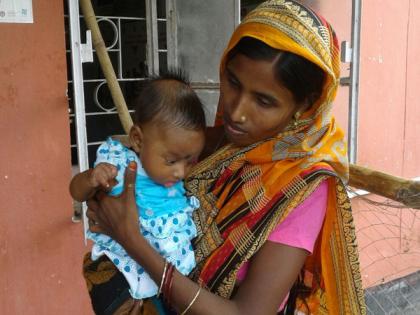35 per cent of children under five are stunted: Survey
By ANI | Published: October 11, 2019 10:25 PM2019-10-11T22:25:21+5:302019-10-11T22:45:02+5:30
A first-ever nationwide Comprehensive National Nutrition Survey (CNNS) released by the Union Health Ministry has revealed that about 35 per cent of children in the country under five years are stunted, 17 per cent wasted and 33 per cent are underweight.

35 per cent of children under five are stunted: Survey
New Delhi, 11 Oct, : A first-ever nationwide Comprehensive National Nutrition Survey (CNNS) released by the Union Health Ministry has revealed that about 35 per cent of children in the country under five years are stunted, 17 per cent wasted and 33 per cent are underweight.
The survey was conducted from 2016-18 in 30 states and Union Territories with technical support from UNICEF.
A UNICEF press release said it was one of the largest micronutrient surveys conducted globally covering anthropometric assessments of 1,12,000 children from 0-19 years of age, including more than 51,000 biological samples for children's micronutrient status and risk factors for non-communicable diseases.
"In India, 35 per cent of children under five are stunted, 17 per cent are wasted and 33 per cent are underweight," the release said.
The CNNS survey shows there is some progress in a reduction in malnutrition, as well as an effective reach of government programmes to prevent Vitamin A and iodine deficiency in children in the age group of 1-4 years.
It says that overweight and obesity increasingly begin in childhood with a growing threat of non-communicable diseases like diabetes (10 per cent) in school-aged children and adolescents.
Union Health Minister Harsh Vardhan said the CNNS gives the first comprehensive national set of data about child and adolescents nutrition, including the 5-14 year age group.
"This will help the government accelerate progress using evidence-based policies and programmes to combat malnutrition and non-communicable diseases like diabetes in children and adolescents," he said. The release citing the survey said that school-age children and adolescents were still at risk of malnutrition even as initiatives such as Poshan Abhiyaan 2018-22 have been launched.
"One in 4 adolescents aged 10-19 years remain thin for their age. Five per cent of adolescents aged 10-19 years old were overweight or obese," the release said.
It said another major concern for India was the high number of anaemic children, adolescents and women in the country.
The survey says that anaemia affects youngest children and female adolescents the most:
"Anaemia was significantly higher in children aged 1-4 years (41 per cent) compared to other age groups. Anaemia prevalence in female adolescents aged 10-19 (40 per cent) years was two times higher than male adolescents (18 per cent)," the release said.
It said that overall, 41 per cent of children in 1-4 years, 24 per cent of those 5-9 years and 29 per cent of adolescents 10-19 years were anaemic.
The release said that a growing threat of non-communicable diseases was found in school-age children with 10 per cent pre-diabetic and high triglycerides.
"Four per cent of adolescents had high total cholesterol and high low-density lipoprotein (LDL). Hypertension (high blood pressure) was found in 5 per cent of adolescents," it said.
( With inputs from ANI )
Open in app